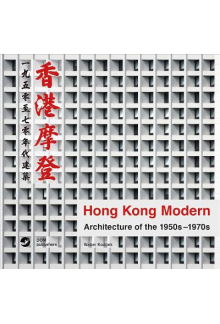- Titulinis
- Meno ir laisvalaikio literatūra
- Architektūra, dizainas
- Architektūra, statyba
- Hong Kong Modern : Architectur e of the 1950s-1970s
Walter Koditek
Hong Kong Modern : Architectur e of the 1950s-1970s
Balsavo 0
ISBN: 9783869227986
Autorius : Walter Koditek
Leidimo metai: 2022
Leidėjas: DOM Publishers
Puslapių skaičius: 448
Leidinio kalba: Anglų
Formatas: Kieti viršeliai
Autorius : Walter Koditek
Leidimo metai: 2022
Leidėjas: DOM Publishers
Puslapių skaičius: 448
Leidinio kalba: Anglų
Formatas: Kieti viršeliai
Pilna kaina:
79.00 €
- % perkant internetu
Kaina:
Šių parametrų produkto neturime
Likutis pakankamas
Pristatymas Lietuvoje per 3-5 savaitės. Galimas vėlavimas
Turime sandėlyje. Pristatymas Lietuvoje 1-4 d.d.
Pristatymas Lietuvoje per 3-5 savaitės. Galimas vėlavimas
Pristatymo sąlygos
Aprašymas
In the post-war decades, Hong Kong architects, many of them having migrated from Mainland China or studied overseas, embraced modern principles when forced to face the problems of housing shortage, mass construction and limited budgets. Although economic efficiencies often prevailed over design, their buildings were rooted in their time and place, reflecting the local climate, social values, materials, technique and use in an often unique and pragmatic fashion. With more than 300 buildings and ensembles documented, the new publication "Hong Kong Modern Architecture of the 1950s-1970s" by Walter Koditek gives a comprehensive overview on the architecture of that transformative period in combining full-page photographs with detailed background information and further b/w images explaining and illustrating the design and history of these buildings. Information about the architects behind the projects and a series of academic essays penned by renowned scholars Cecilia L. Chu, Eunice Seng, Ying Zhou, and Charles Lai complement the publication.
While the book does not seek to provide a complete inventory, its unique documentary format, which deliberately mixes well-known architectural masterpieces with more mundane structures under seven specific building categories, invites viewers to comprehend the intrinsic relationships between these built forms and how their designs have been simultaneously shaped by the advent of the international Modern Movement and adaptions to the local context. Crucially, the uniform framing and composition of these compelling facade images directs attention not only to often overlooked architectural details, but also to the varied informal appropriations that transformed their modernist characters over time.
Atsiliepimai (0)
Palikite atsiliepimą

